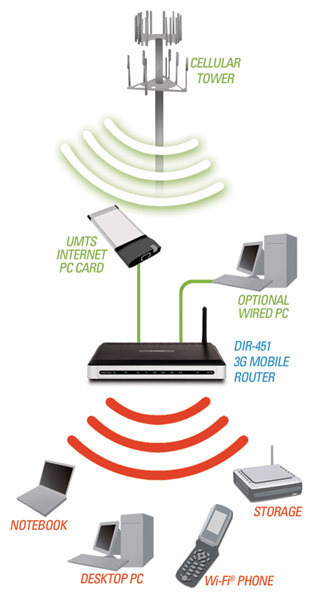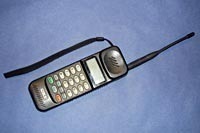UMTS is an abbreviation for Universal Mobile Telecommunications System. It is one of the third-generation (3g) cell phone technologies quickly developing today. UTMS is also referred to as the 3GSM so as to emphasize the coalition between 3G technology and GSM standard.
In theory, the UTMS, using W-CDMA, is supposed to be able to transfer up to 14.0 Mbit/s data transfer rates although real uses have shown a transfer rate of 384 Kbit/s to 3.6 Mbit/s with various handsets. However, this speed is still a lot greater than other competing technologies, which enables a connection to the World Wide Web. Also, UMTS offers videoconferencing, downloading music and video files, along with being able to watch TV shows. However, statistics in countries such as Japan and Korea have shown that the transition is still in process and thus, there are not yet many users using the technology.
Inside the Technology
UMTS is basically composed of W-CDMA, TD-CDMA, or TD-SCDMA air interfaces, GSM's Mobile Application Part (MAP) core, and the GSM codecs. Over W-CDMA, UMTS uses 5 MHz channels, completely in a different zone than the competition such as CDMA2000 which uses 1.25 MHz. This had led to many criticisms for a large spectrum usage, as many developing countries that cannot support a wide range of spectrums cannot adopt this technology even in the near future.
Also, migrating from GSM to UMTS technology can be a costly one for the GSM operators, despite the process being extremely simple. Especially the costs of new spectrum licenses and installing the UMTS at existing towers are rather high.

Global Roaming
UMTS phones are extremely useful for a cosmopolitan and a traveler. They are designed in a way so that they can easily roam in other UMTS networks (this is assuming that your UMTS provider is partnered with the local UMTS provider) in other areas of the world. Also, almost all UMTS phones, except those in Japan, are UMTS/GSM dual-mode devices and thus, during a call, if the UMTS phones goes out of the UMTS boundaries, the call will be transferred to a GSM coverage.
As global roaming is a key part of UMTS, UMTS phones support a wide variety of frequencies. Also, many countries support different UMTS frequencies allowing for an even more global capability for UMTS phones. Currently there are 11 different frequency combinations for the UMTS in the world.
Like the SIM cards for GSM phones, there is a USIM card for UMTS phones. Like the SIM cards, the USIM cards are a way for the network to identify and authenticate both local and roaming customers. If UMTS networks have an agreement amongst one another, then a roaming user can still use their UMTS phones in another network, although the prices may differ. In addition, USIM cards act as additional storage space where contacts, messages, and other information can be stored. Like the SIM cards, the USIM cards can also be removed from one UMTS phone and be placed in another GSM or UMTS phone and that phone will take the identification of the card.
Known Problems and Issues
As according to the ITU Recommendations, all UMTS available countries have agreed upon it. However, some countries have set their spectrums differently and thus, interoperability does not work fully when moving from one nation to another nation with drastically different spectrums.
Some other problems that still exist, but have been fixed quite heavily include:
- UMTS handsets that are heavy with a short battery life;
- Problems regarding the compatibility between UMTS and GSM, which frequently led to connections being dropped;
A famous example of a handset with these issues is the prototype of Apple, Inc.'s first generation of iPhone, only supporting Enhanced Data Rages for GSM Evolution (EDGE).




Follow Us!